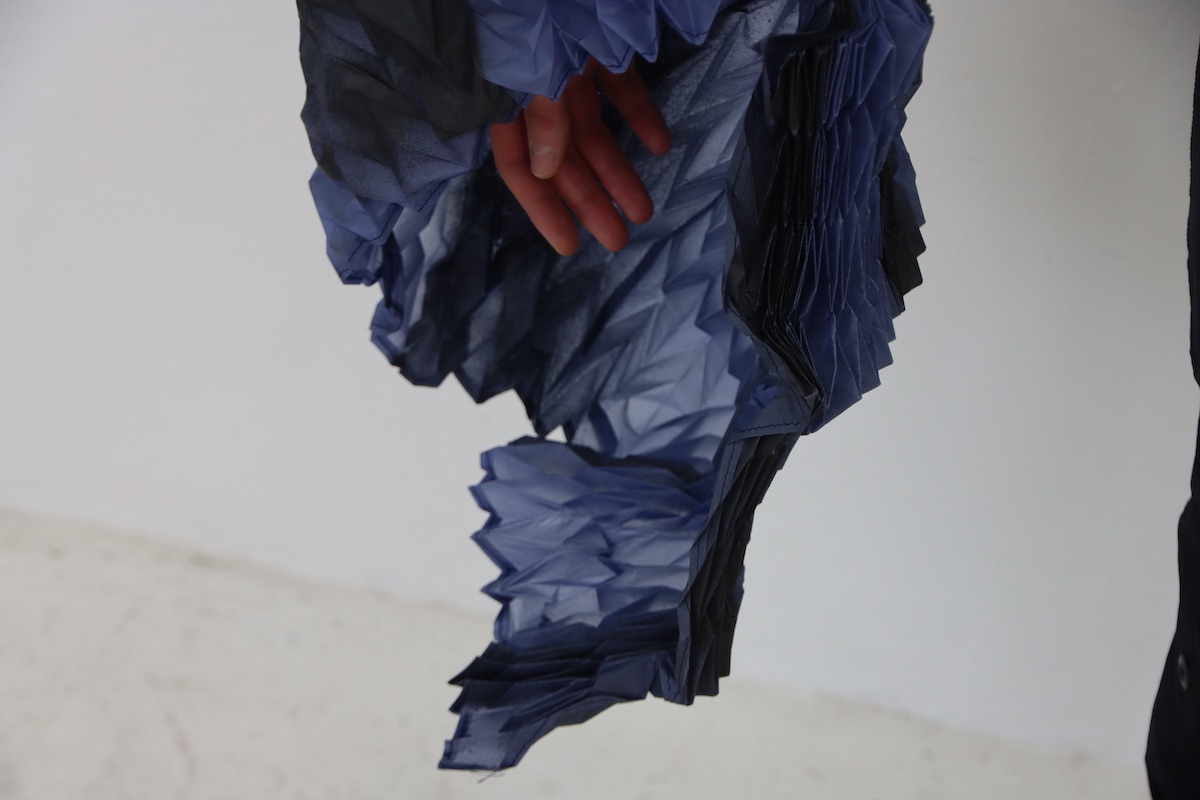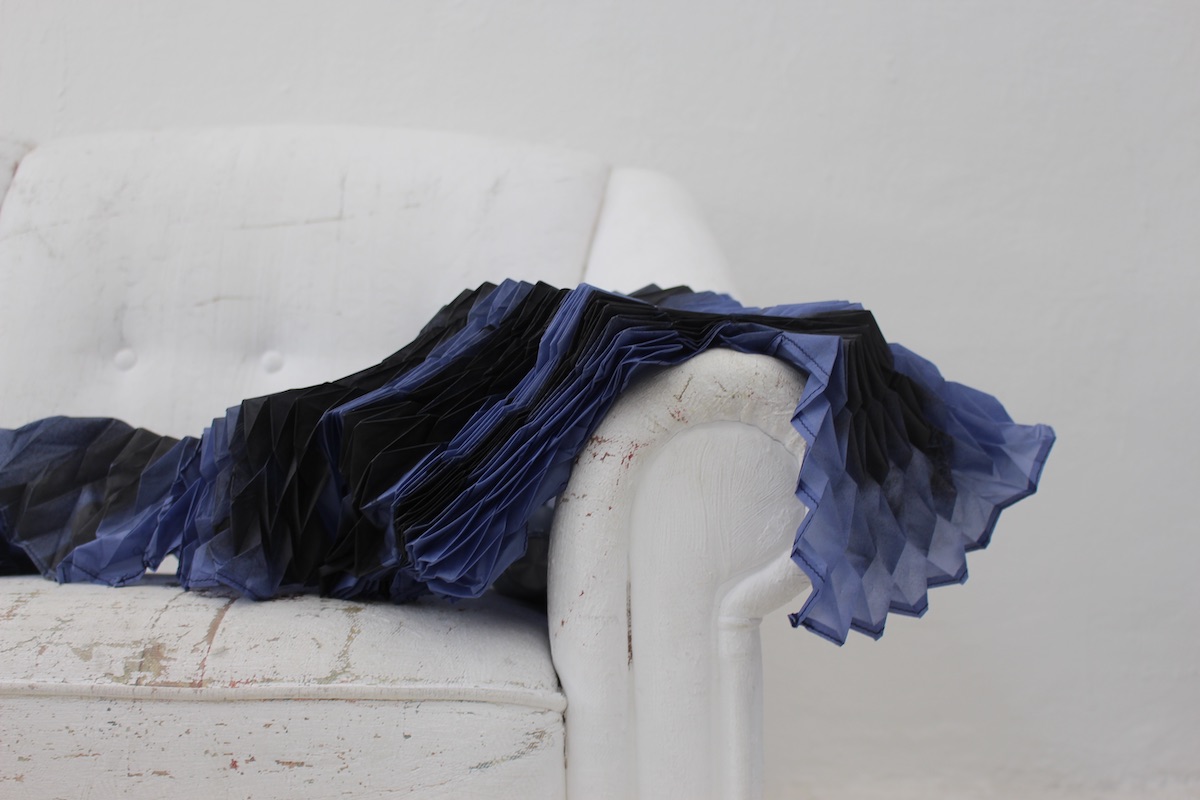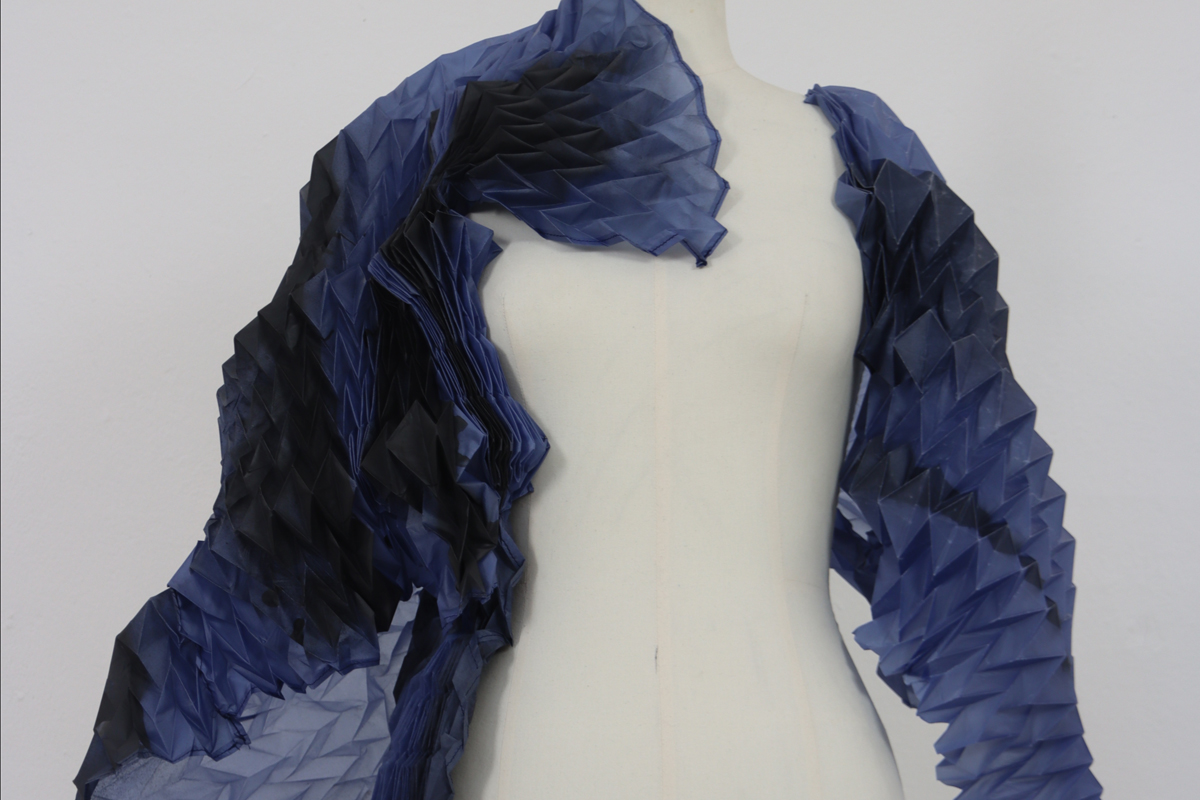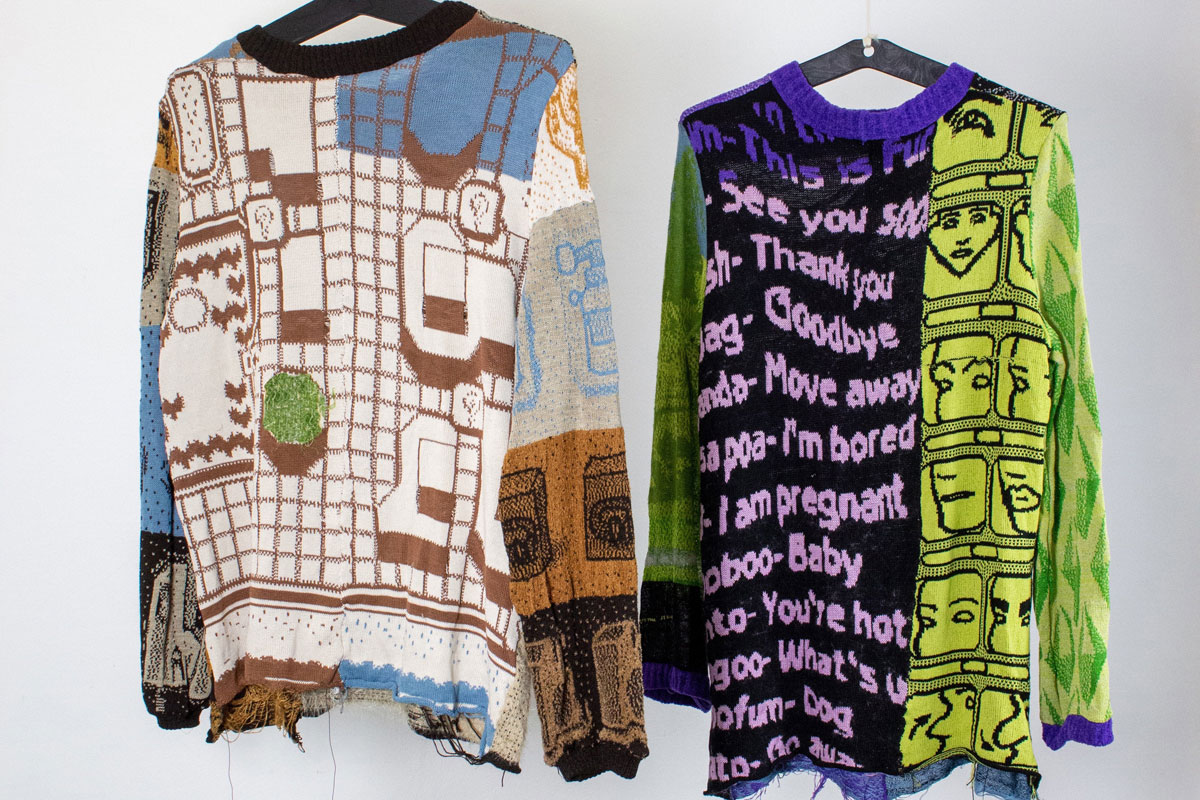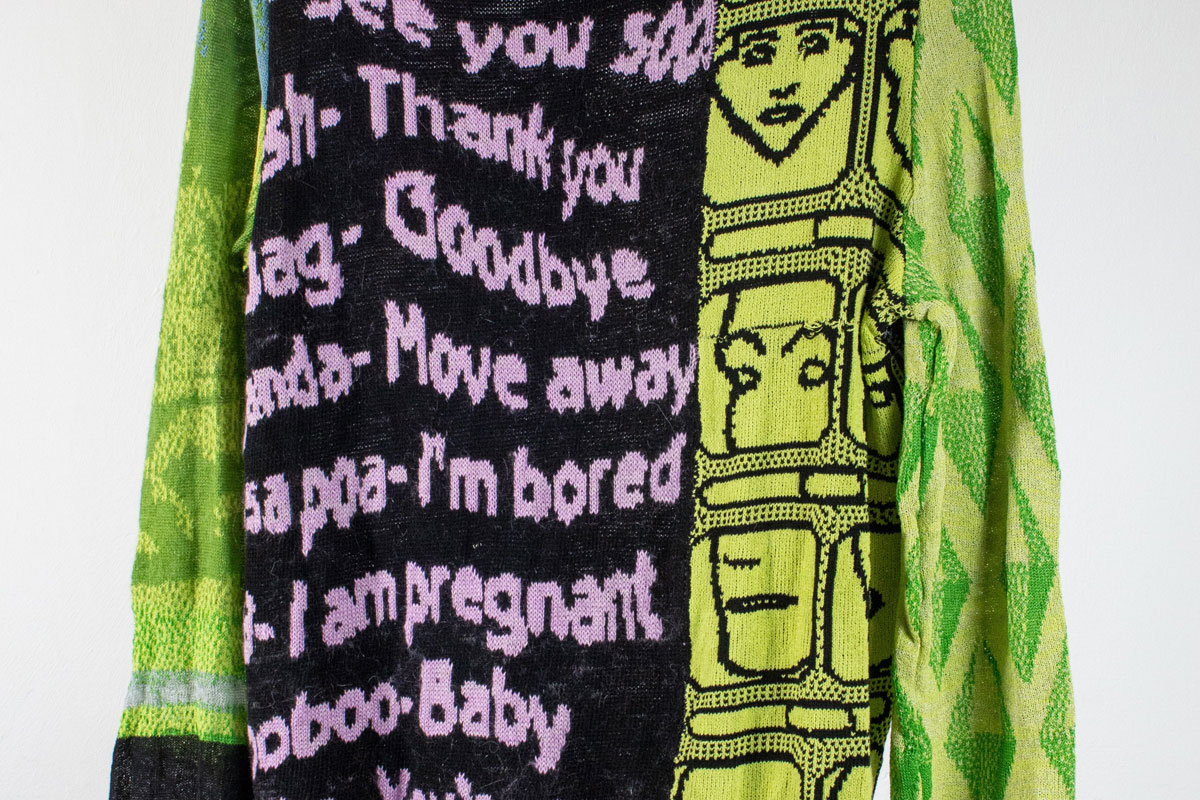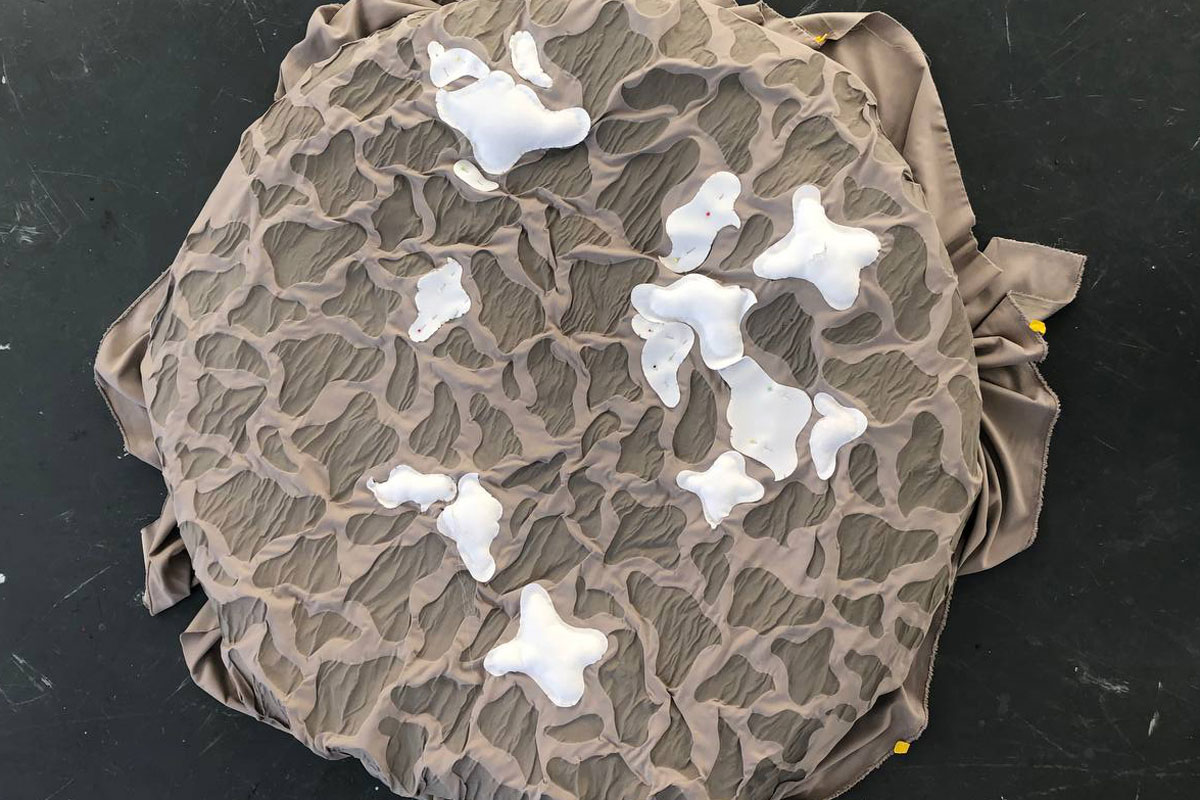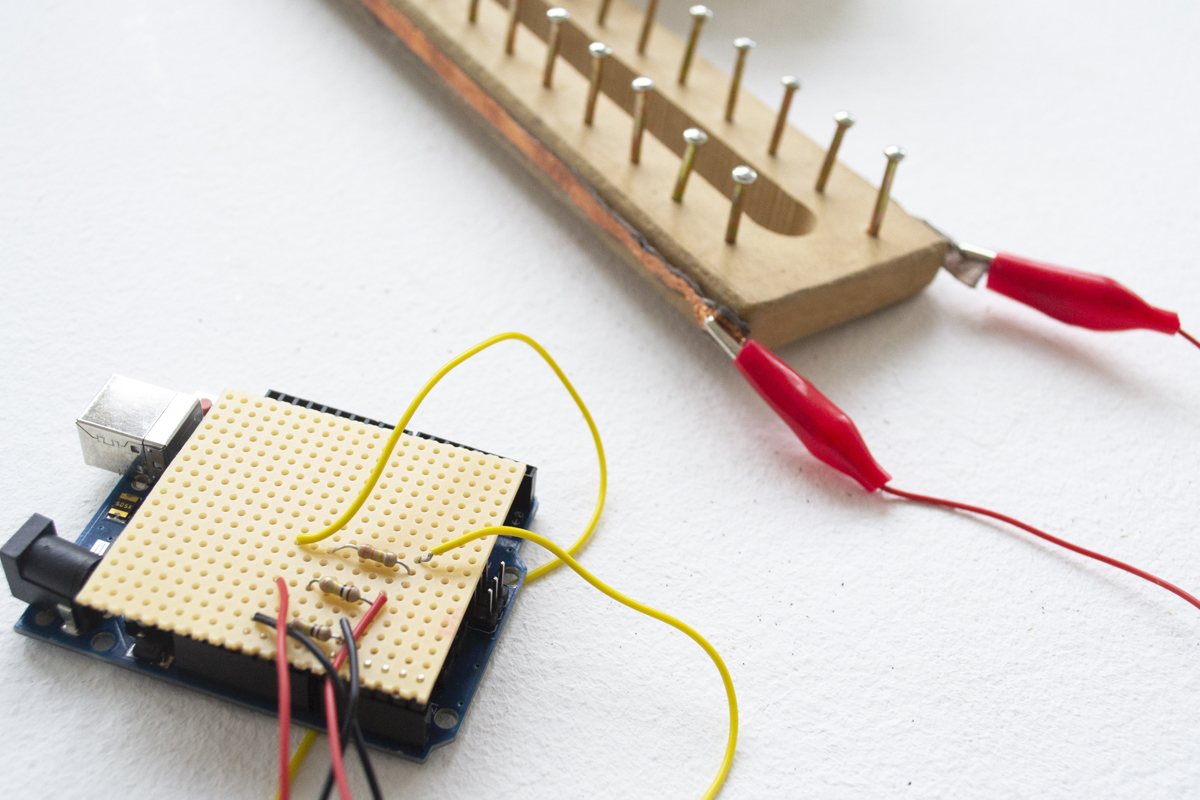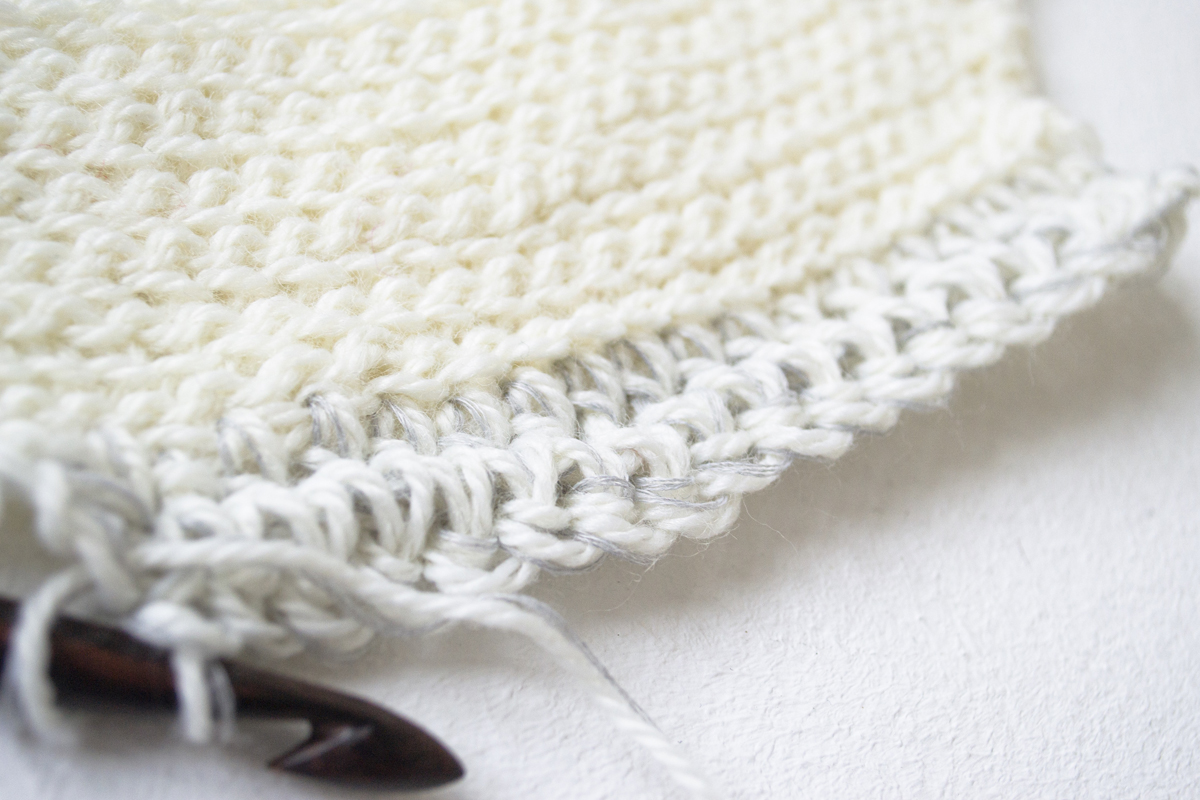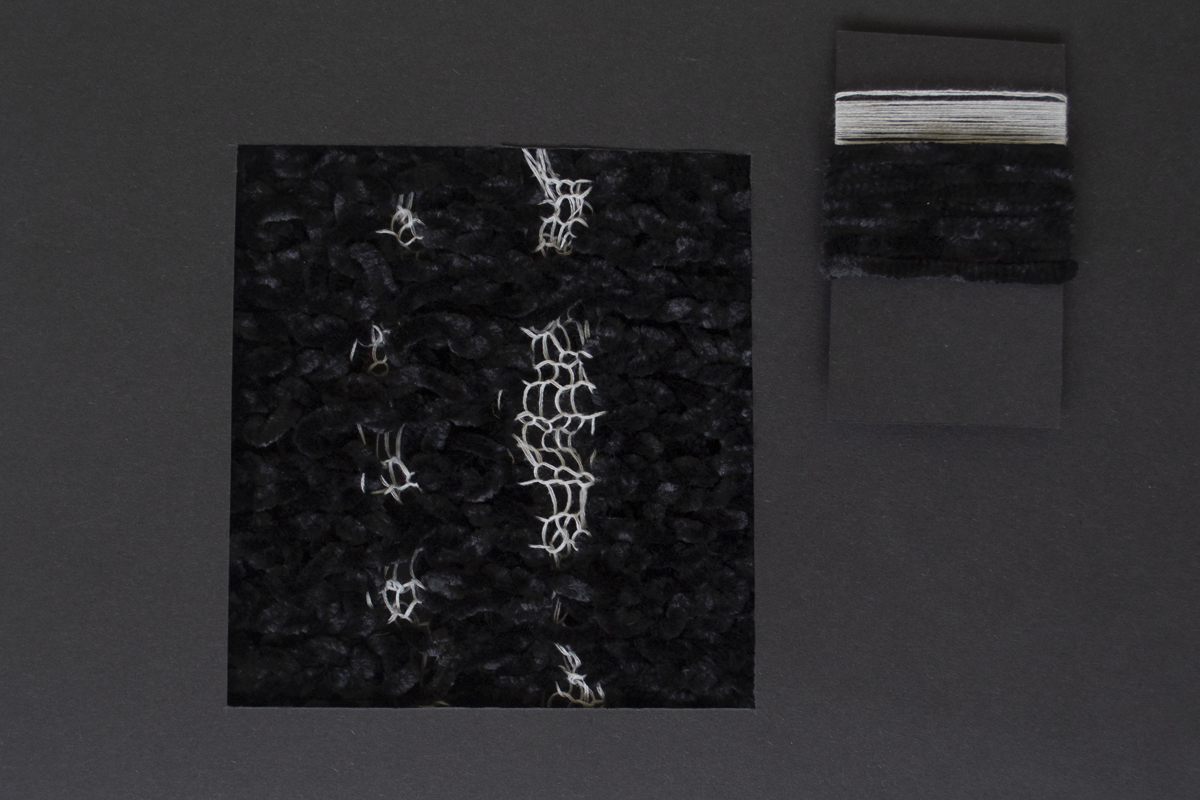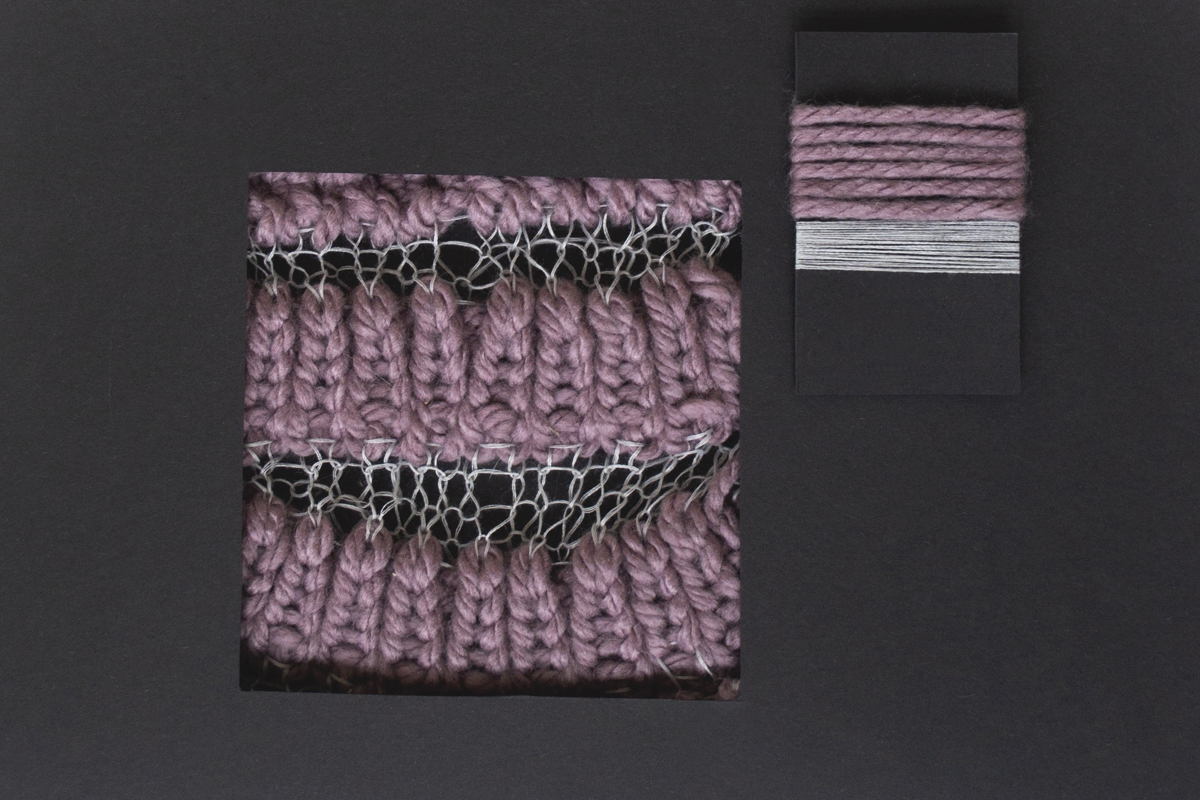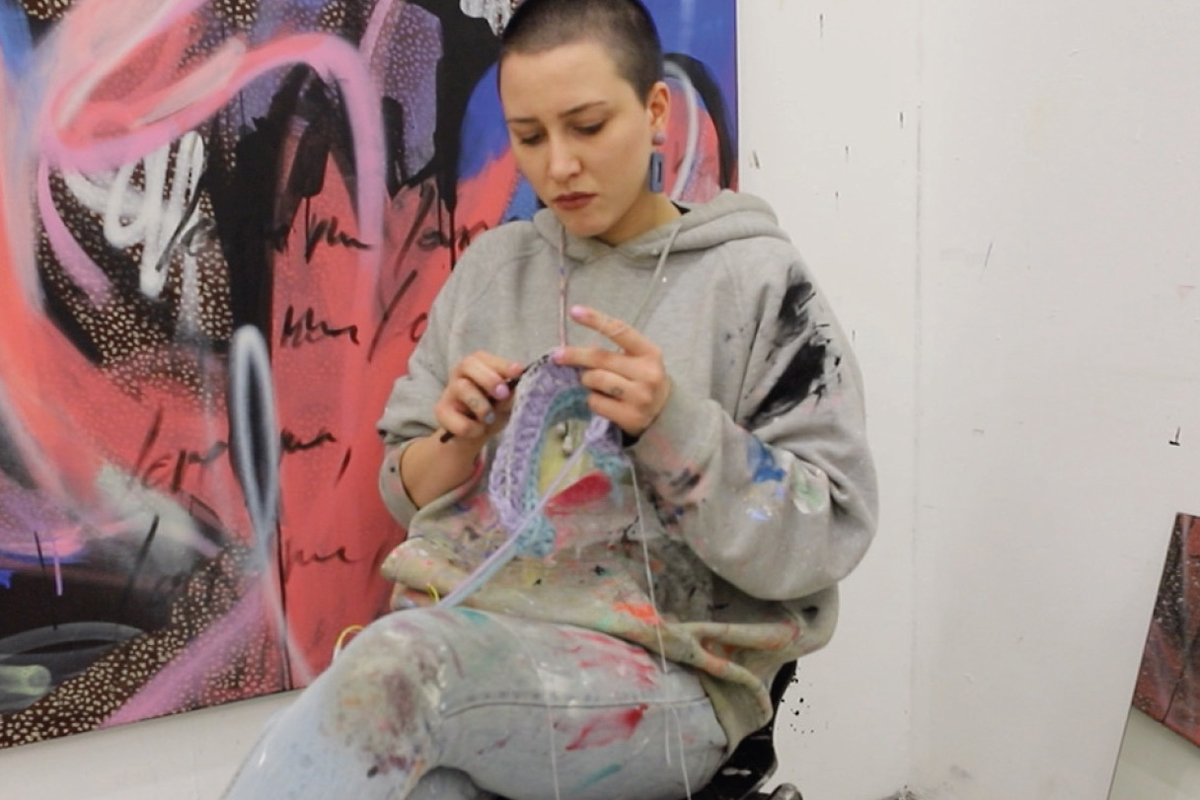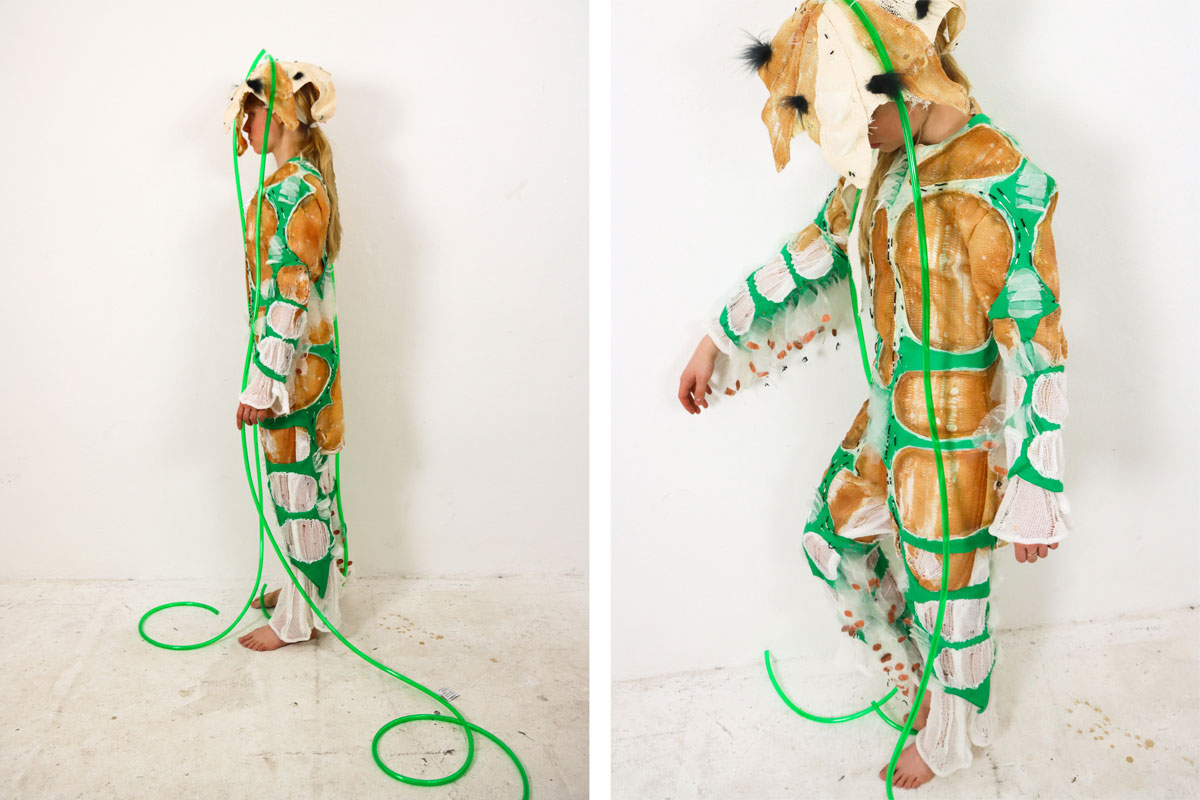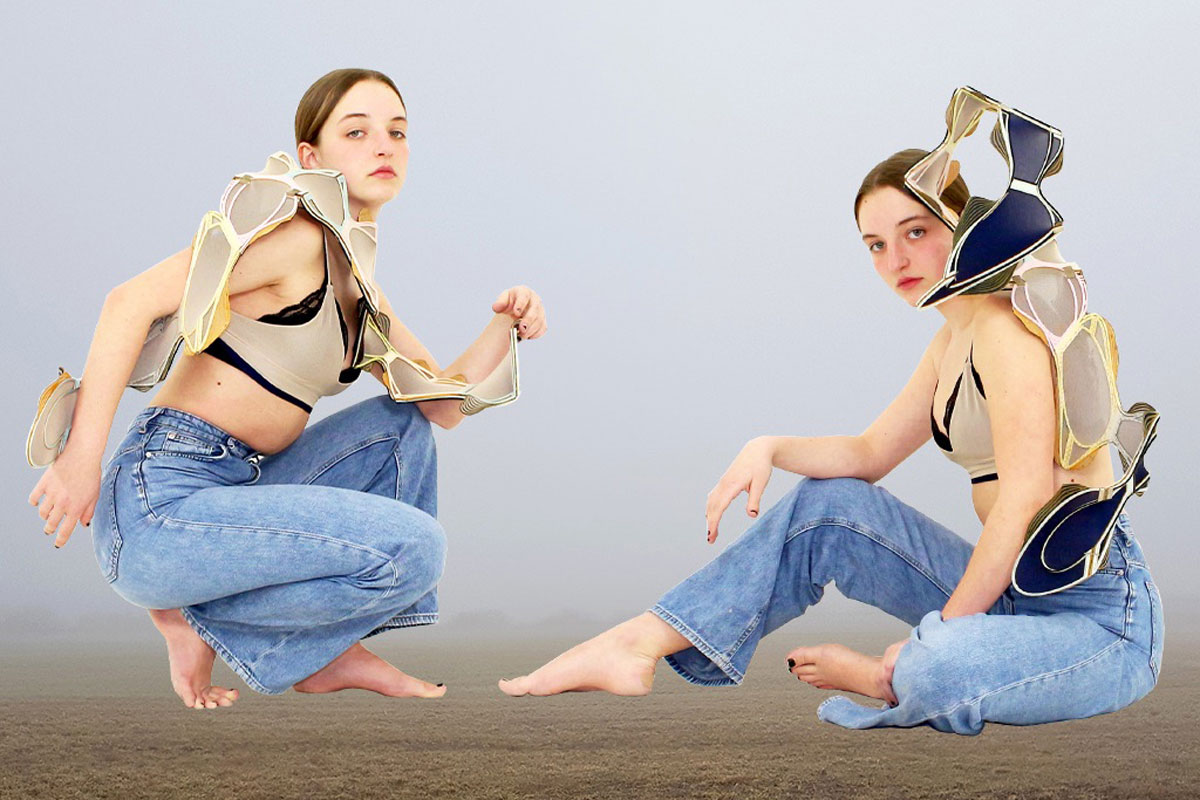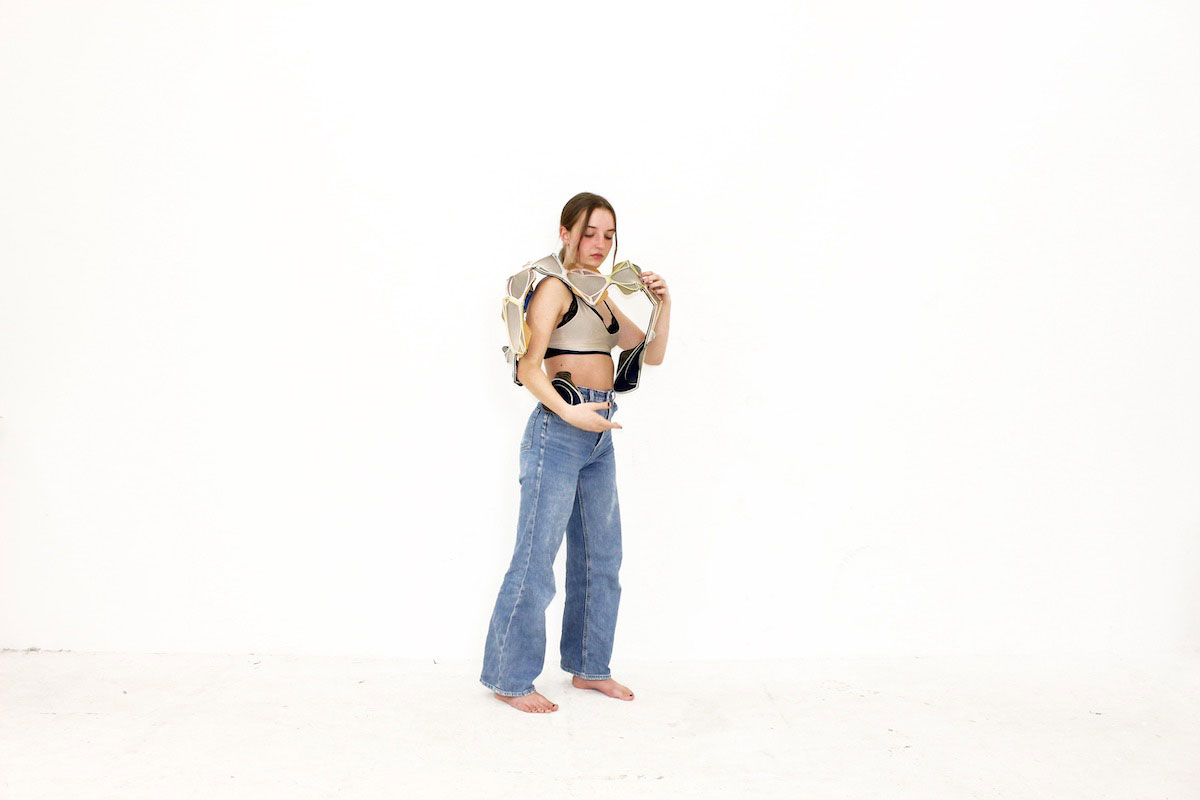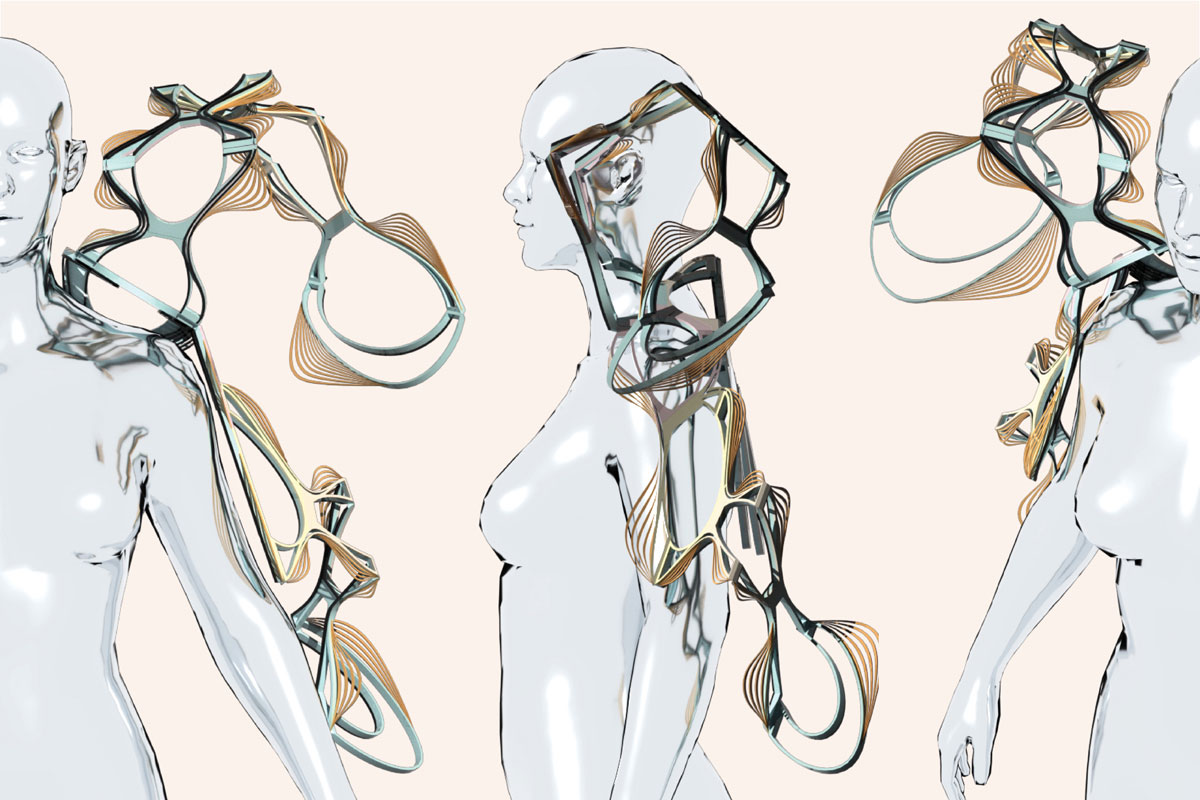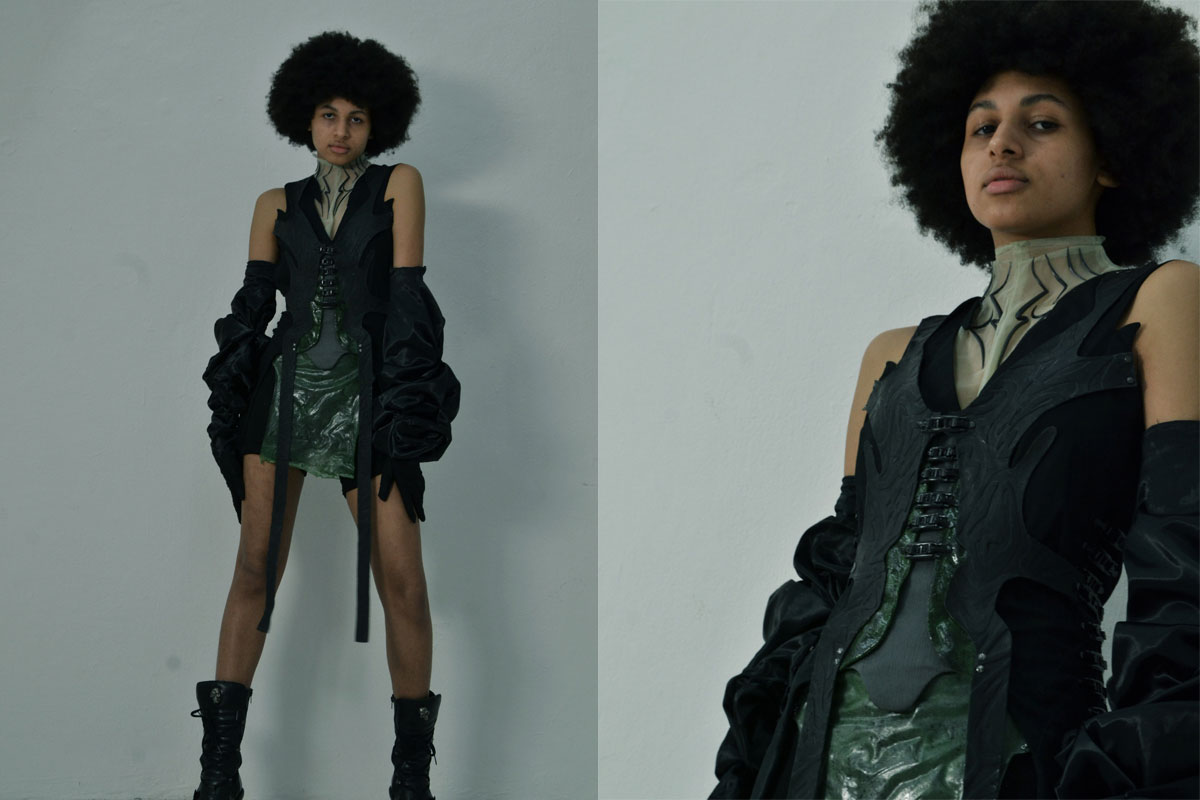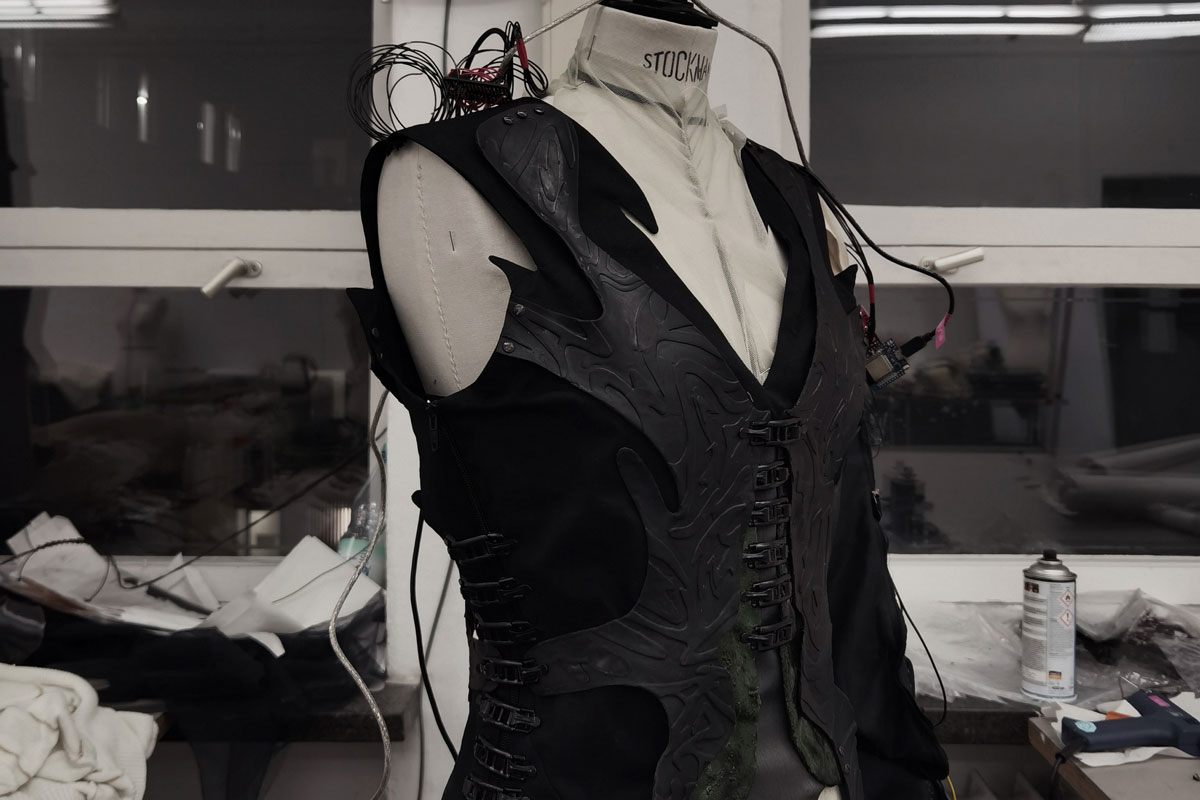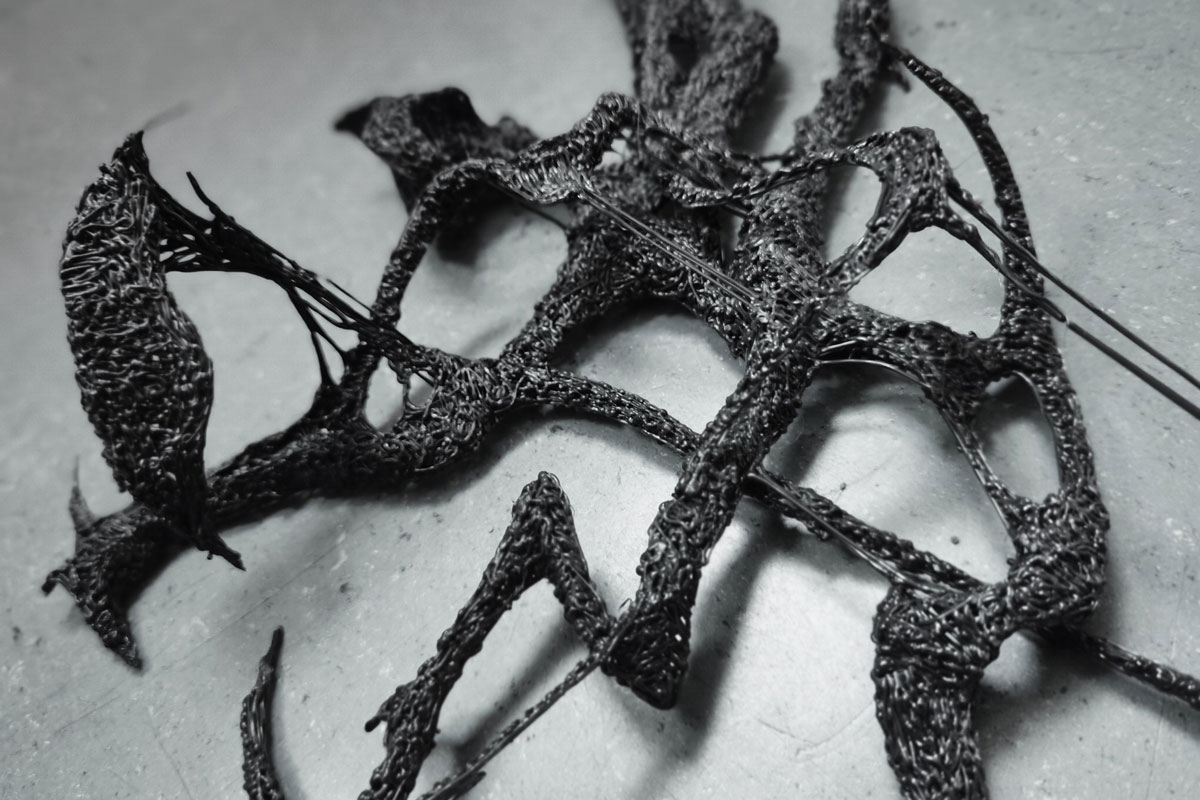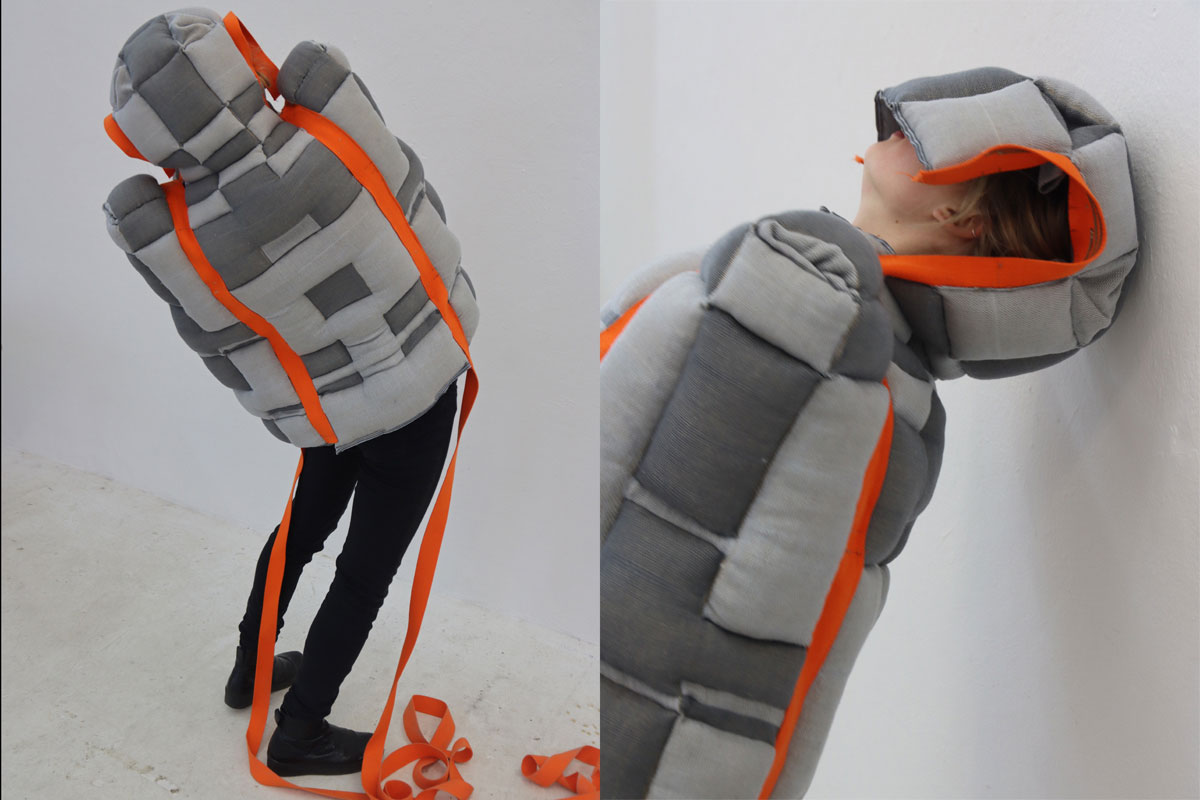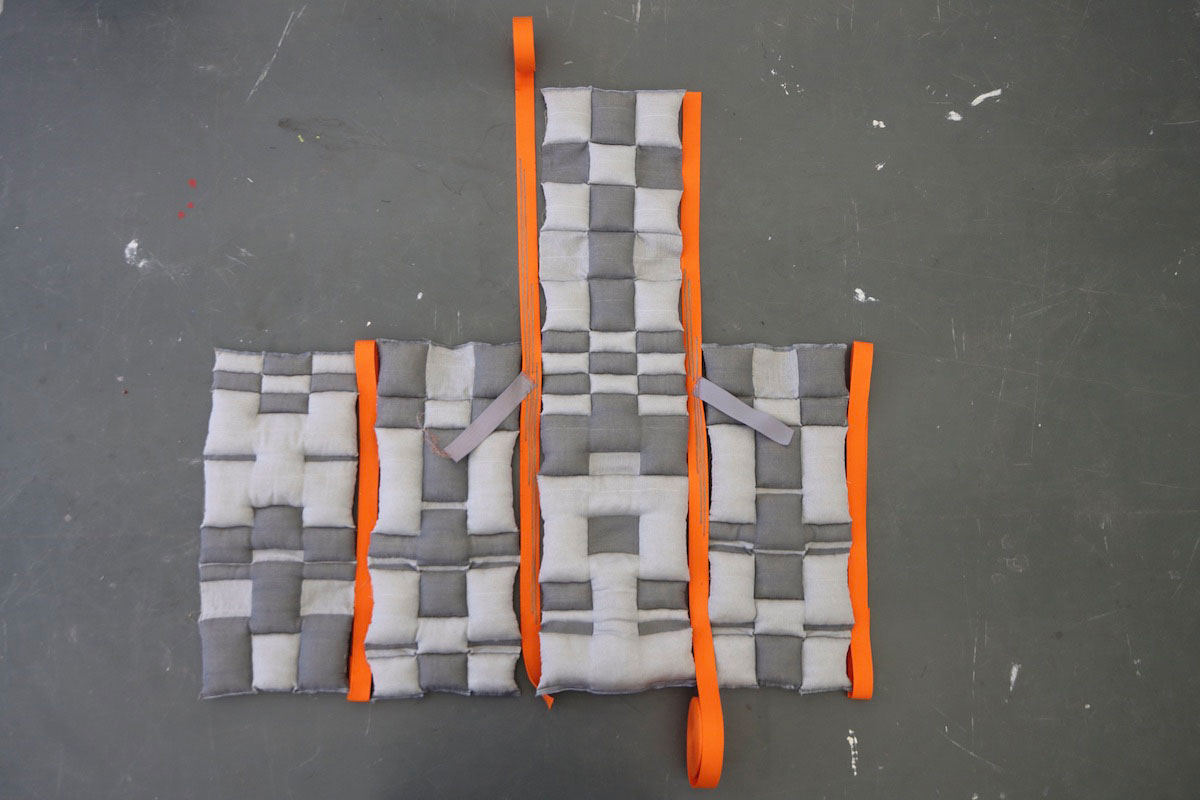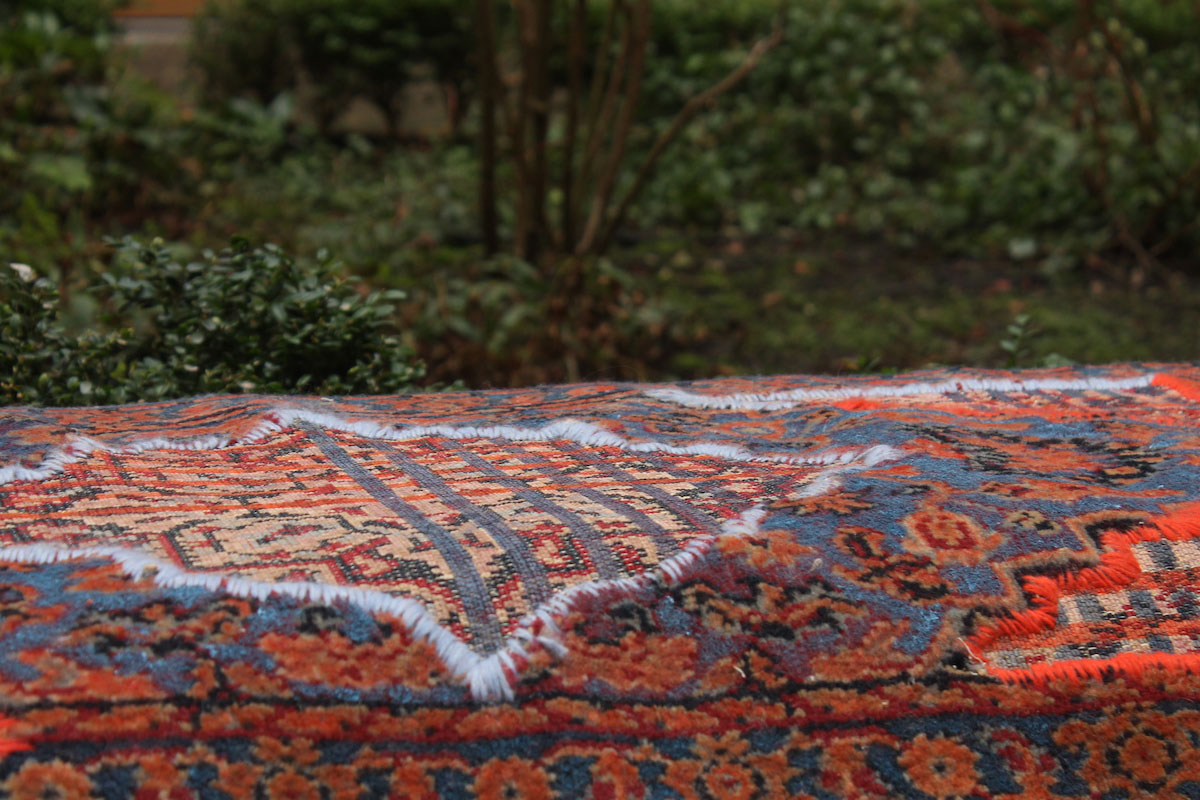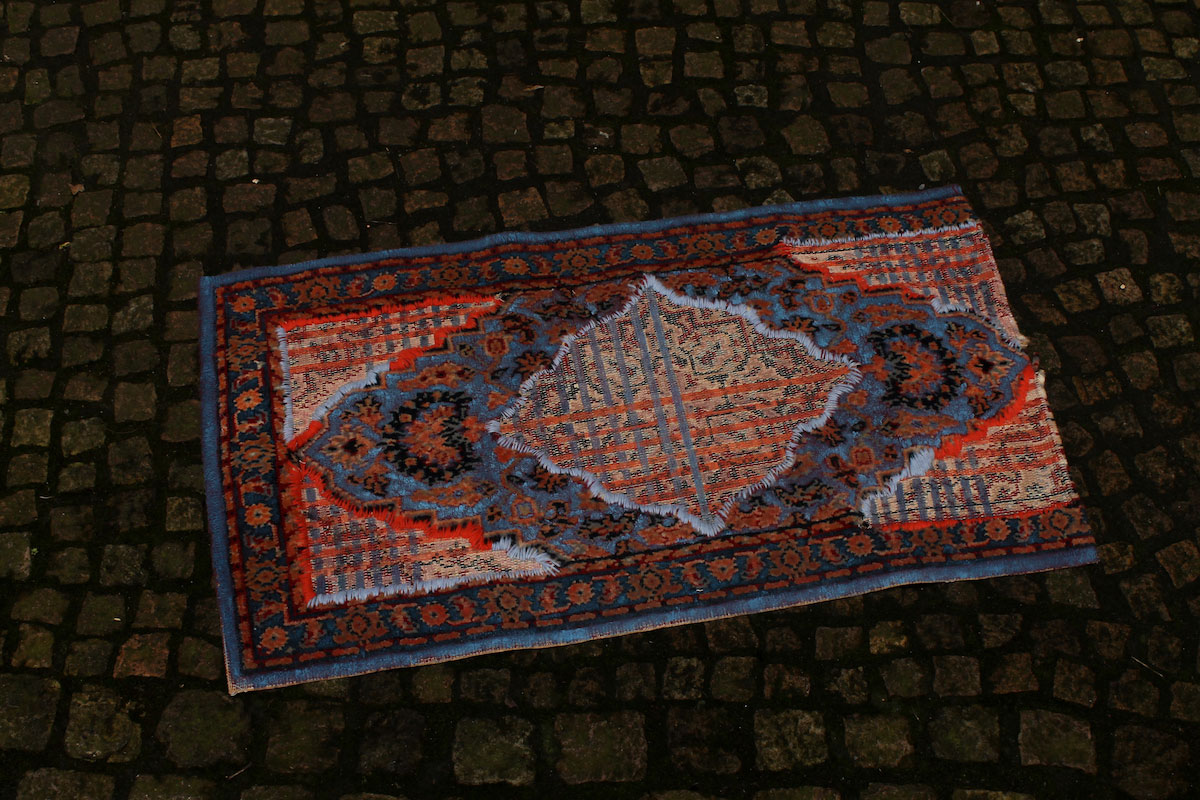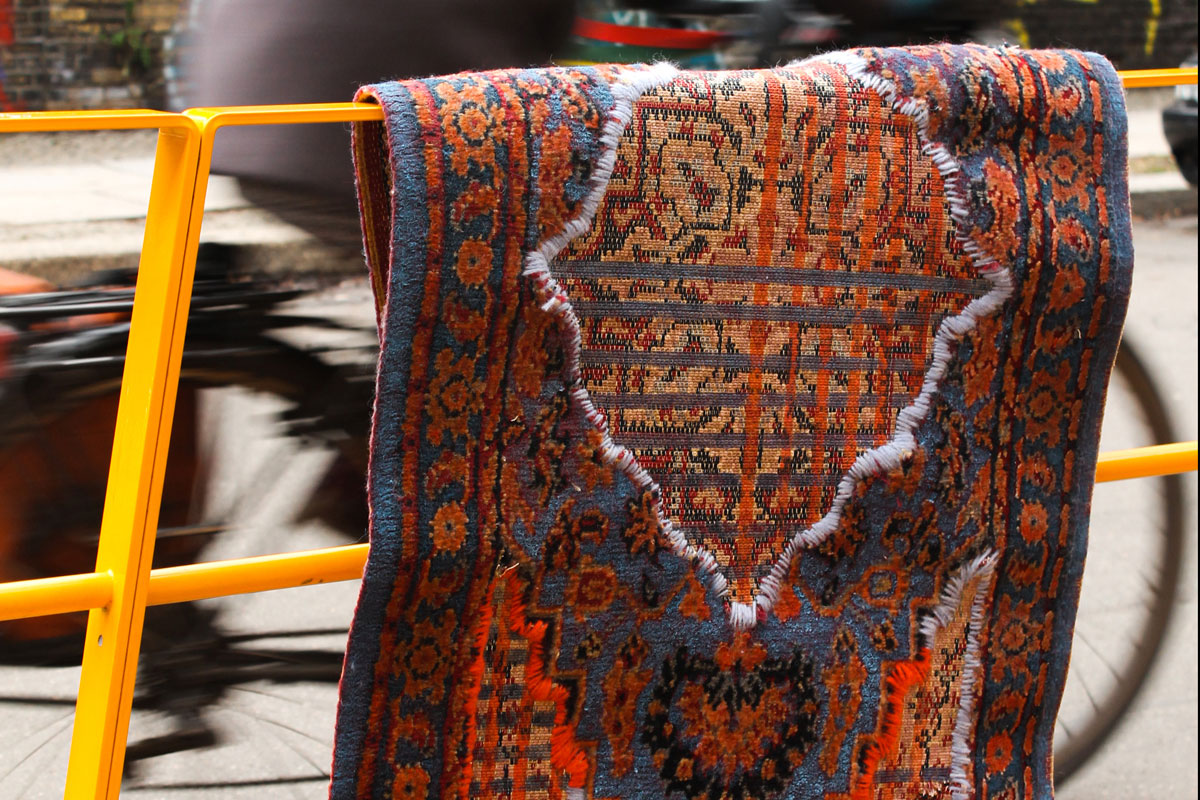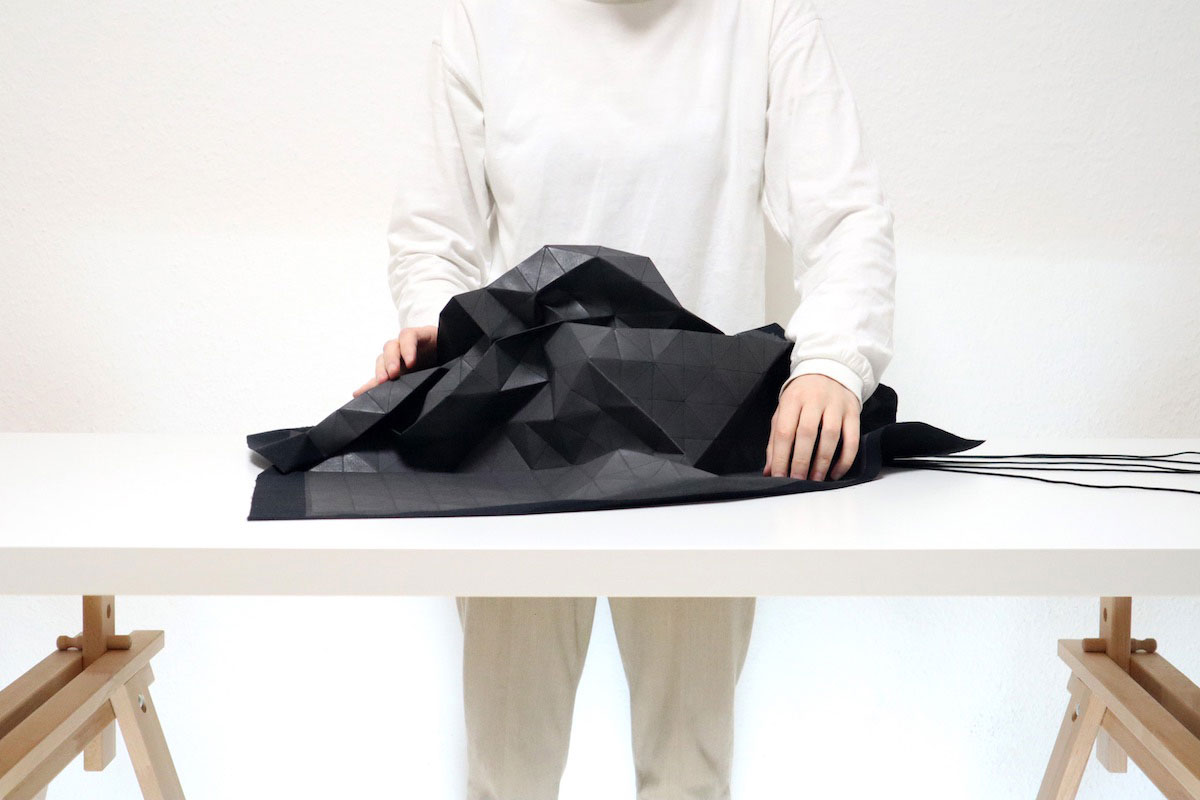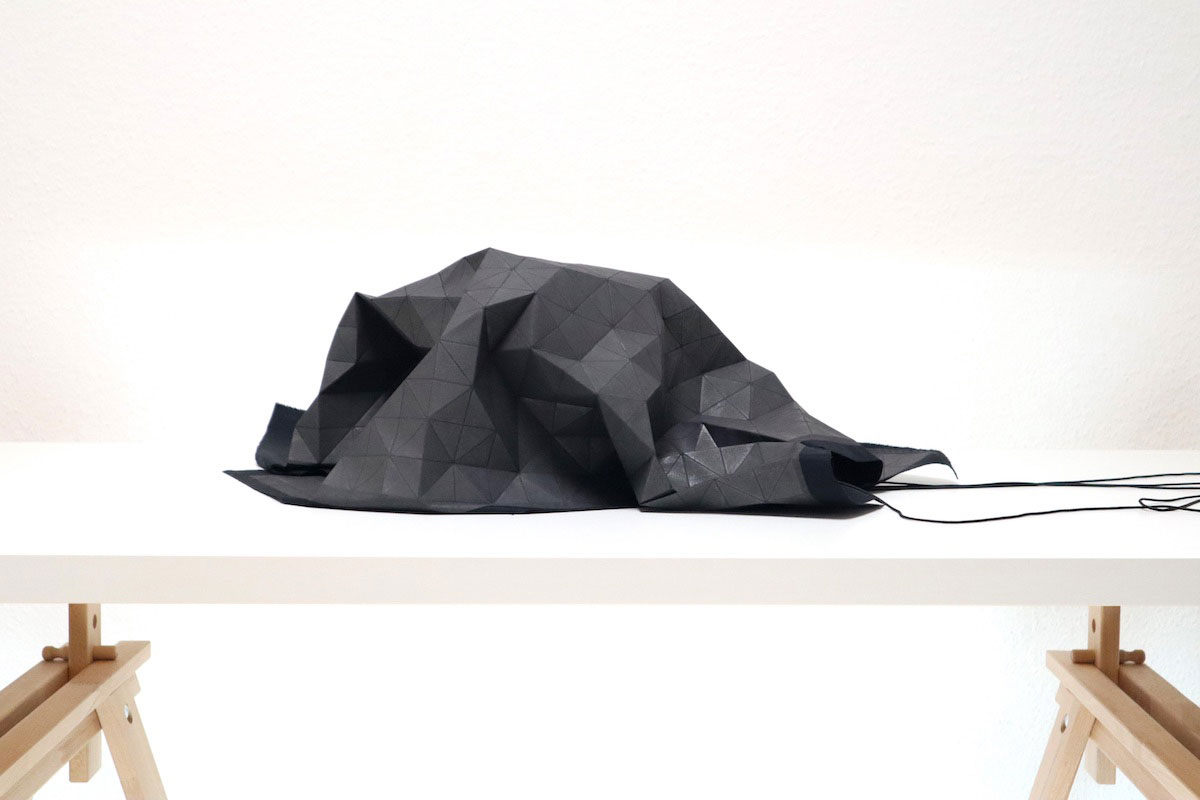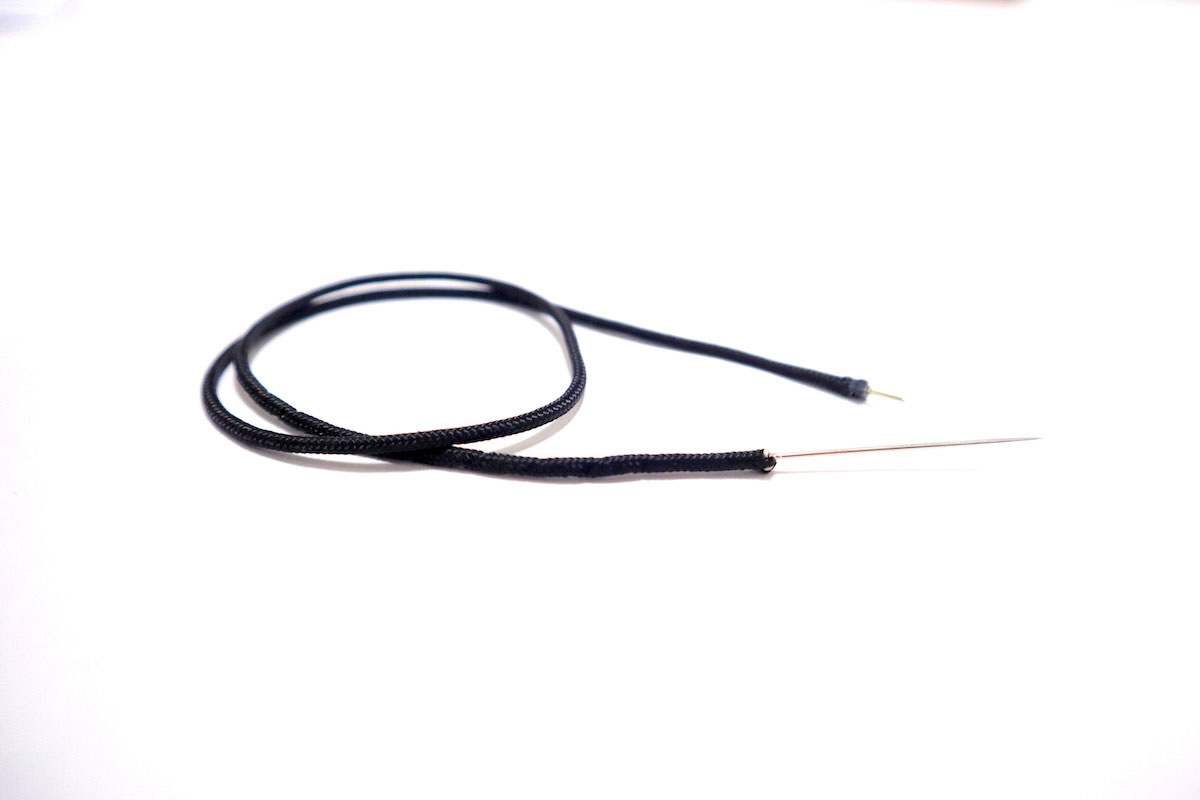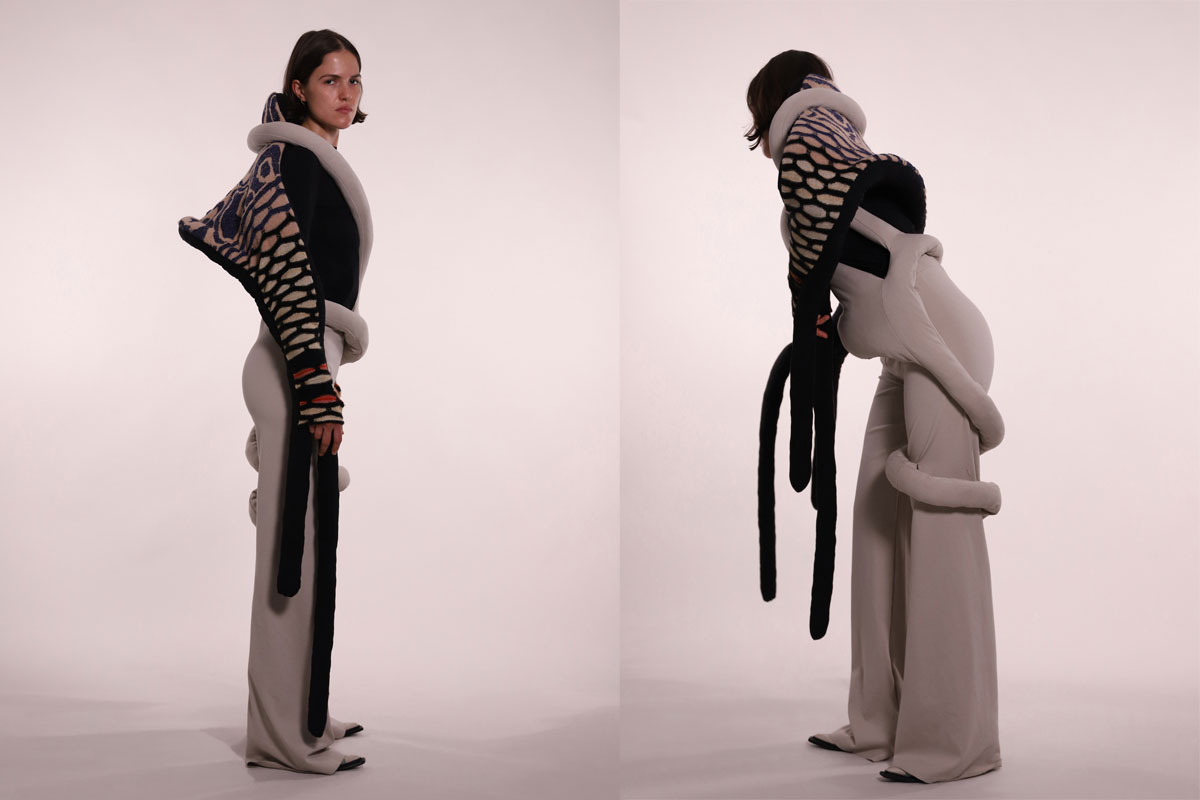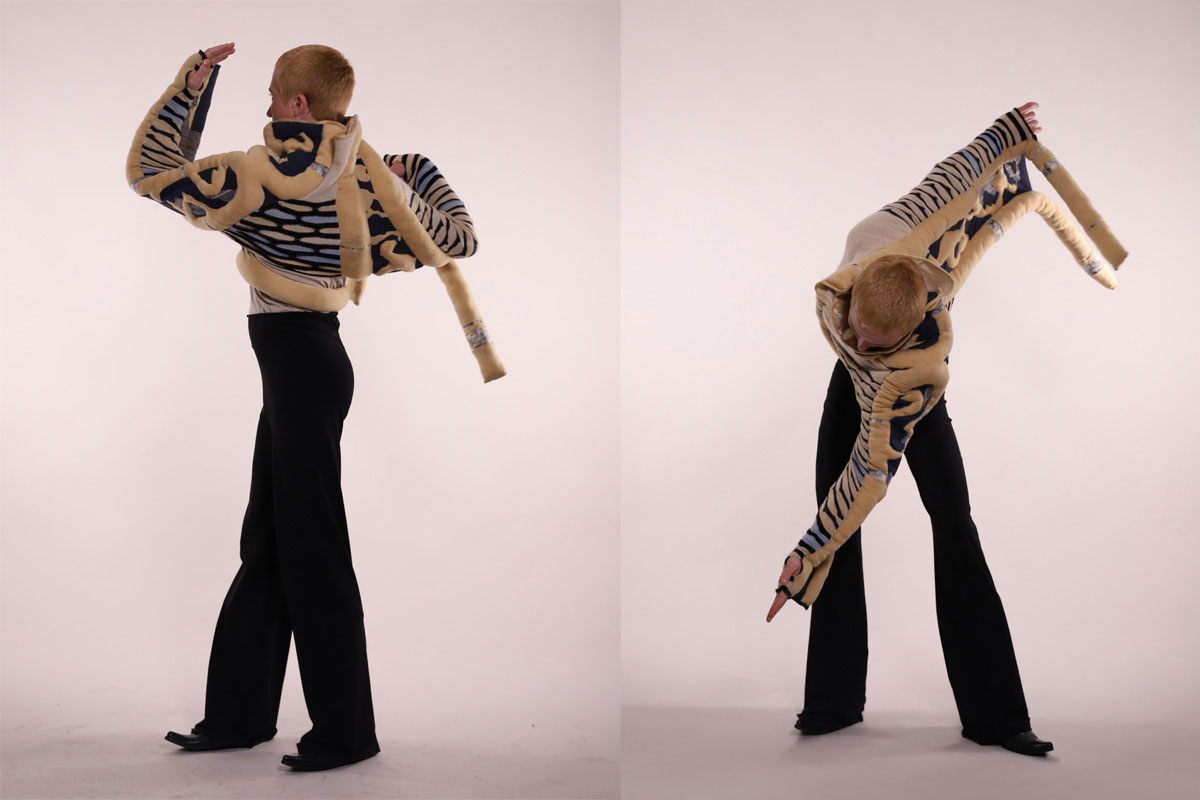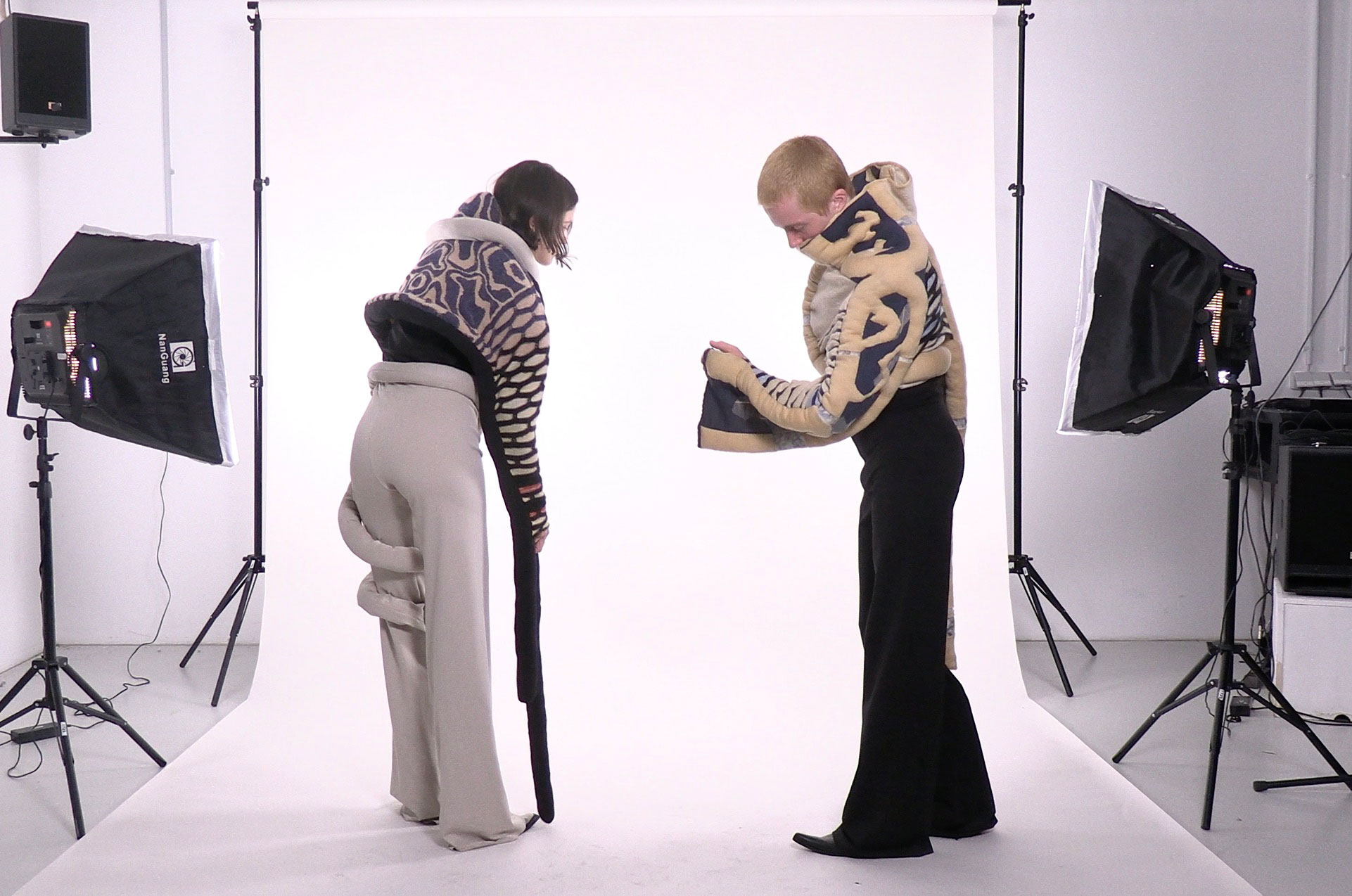plié
Folding is natures most common way of making patterns. It can occur in all matters and materials. A simple fold contains a range of dynamics and depths. They are a direct result of movement which in return means that movement can be detected by monitoring or reading folds.
What if we use this result of movement (folds) as the actual means to explore and express the body and its relationship to the surrounding environment?
What happens if we add an additional element like sound to further intensify the experience?
Similarly to the fold, sound can be used as a sort of auditory visualizer of the moving body. A voice for the body. An embodied voice.
In this project, paper origami techniques are used to pleat fabric to create three-dimensional wearable sculptures that work as sort of extensions of the body. Textile sensors, which respond to movement by reading a change in resistance when opening and closing the folds, are added to trigger selected sounds. This allows the wearer to experience something very familiar - their body - in a new, different way. They become much more conscious of their body, its movements and the space they hold in a room. Usually, when e.g. dancing, the moves are clear reactions to the music. But with the pleated sensor the two seem to merge. Does the wearer control the sound? Or does the sound influence the wearers motions? Is it a combination of both?
The origami pleated sensor - in combination with selected sounds and the bodies movement - creates very individual multi-facetted & multi-sensory explorations of nonverbal, embodied communication.
Download Documentation PDF>>
What if we use this result of movement (folds) as the actual means to explore and express the body and its relationship to the surrounding environment?
What happens if we add an additional element like sound to further intensify the experience?
Similarly to the fold, sound can be used as a sort of auditory visualizer of the moving body. A voice for the body. An embodied voice.
In this project, paper origami techniques are used to pleat fabric to create three-dimensional wearable sculptures that work as sort of extensions of the body. Textile sensors, which respond to movement by reading a change in resistance when opening and closing the folds, are added to trigger selected sounds. This allows the wearer to experience something very familiar - their body - in a new, different way. They become much more conscious of their body, its movements and the space they hold in a room. Usually, when e.g. dancing, the moves are clear reactions to the music. But with the pleated sensor the two seem to merge. Does the wearer control the sound? Or does the sound influence the wearers motions? Is it a combination of both?
The origami pleated sensor - in combination with selected sounds and the bodies movement - creates very individual multi-facetted & multi-sensory explorations of nonverbal, embodied communication.
Download Documentation PDF>>
